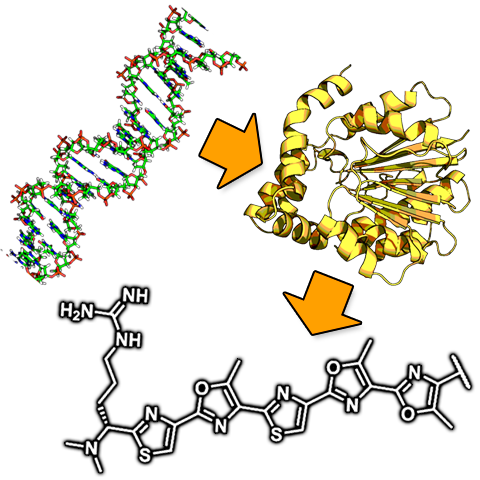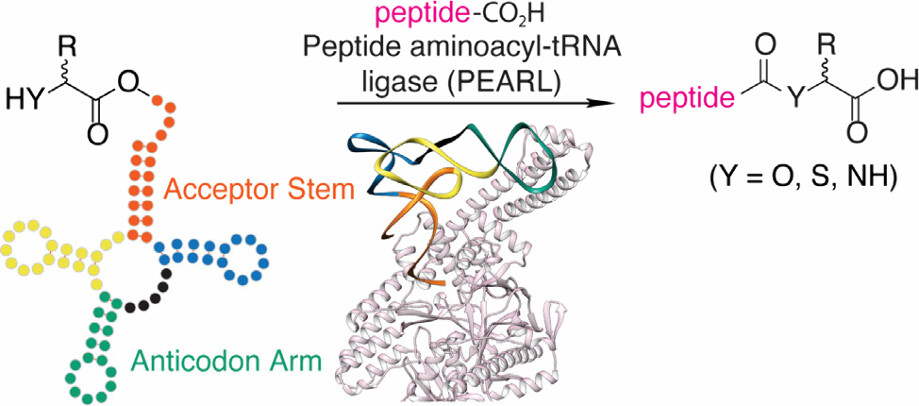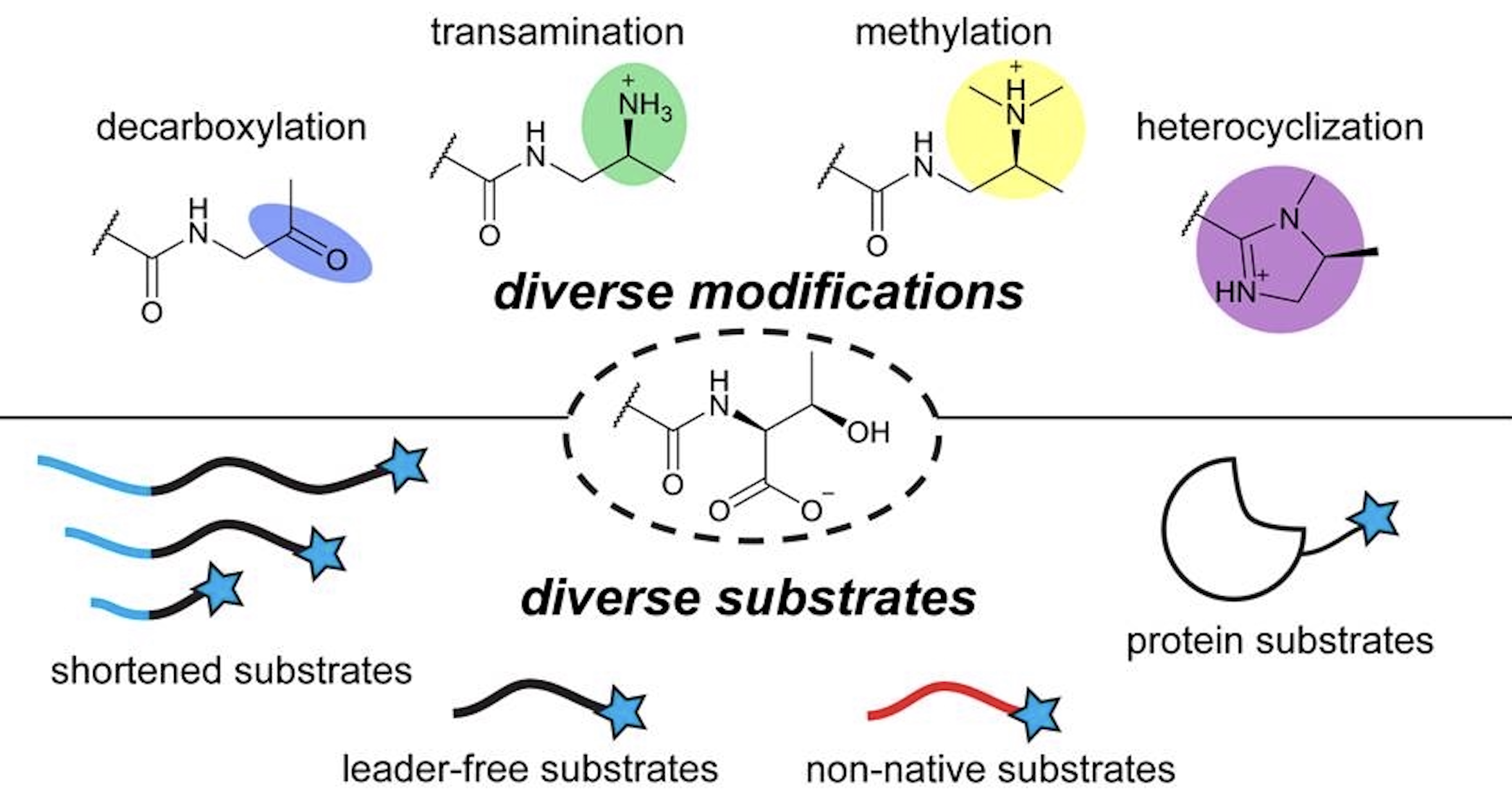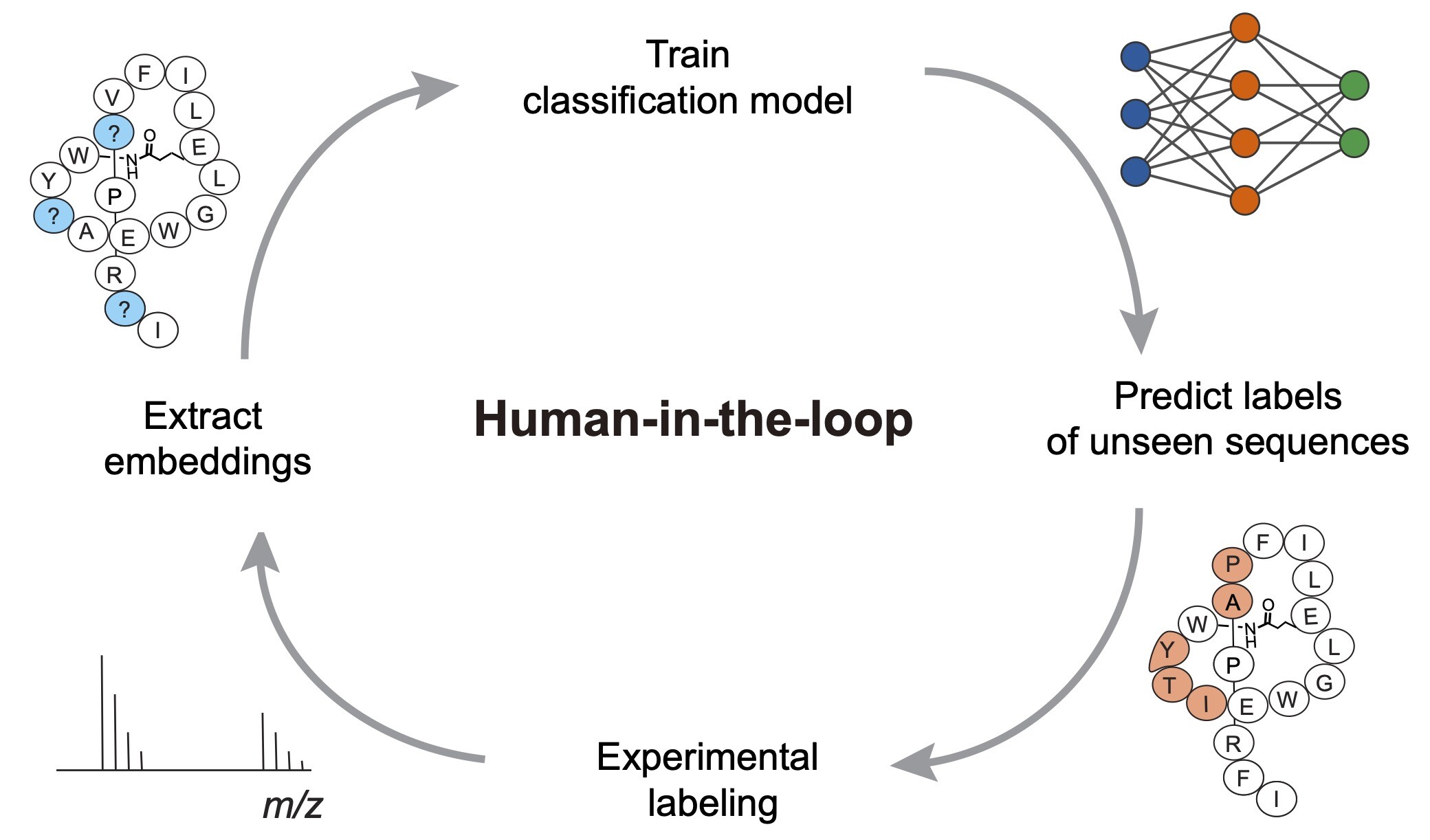From Genes to Molecules
 We are a chemical biology group that focuses on the study of natural products. Natural products are highly evolved and functionally privileged compounds that often display complex chemical structures. These molecules have inspired generations of synthetic organic chemists, unveiled numerous fundamental biological processes as chemical probes, and served as the most significant source of chemical matter for drug discovery.
We are a chemical biology group that focuses on the study of natural products. Natural products are highly evolved and functionally privileged compounds that often display complex chemical structures. These molecules have inspired generations of synthetic organic chemists, unveiled numerous fundamental biological processes as chemical probes, and served as the most significant source of chemical matter for drug discovery.
As the field of genomics has expanded, it has revealed a vast untapped wealth of natural products encoded in the DNA of sequenced organisms, particularly bacteria. Our lab has developed new tools to expedite the discovery of natural products from genomic information, including molecules from bacteria that cannot be cultivated in a lab. In particular, our lab focuses on Ribosomally synthesized and Post-translationally modified Peptides (RiPPs) which have genetically encoded substrates and an incredible diversity of post-translational modifications. Using a genes-to-molecule approach, we have uncovered numerous structurally unique RiPP molecules and revealed the unprecedented mechanistic enzymology through which they form.
We can then leverage this knowledge to produce new-to-nature compounds with improved properties or novel activity with the long-term goal of unleashing the full synthetic potential of Nature to reshape the diagnosis and treatment of human disease.
Even though bacteria are single-celled organisms that lack nuclei, bacterial pathogens are a formidable opponent to the high and mighty Homo sapiens. In a typical healthy human, bacterial cells can rival human cells in number. These clever organisms live in every conceivable niche on earth, including the ocean floor, underneath Arctic ice, hot springs with boiling acid, and inside volcanoes. Some bacteria can even survive chemical assaults as abrasive as hypochlorite (bleach), povidone-iodine (Betadine, a surgical antiseptic), and the interior of activated macrophages. Hundreds of different types of bacteria have been shown to use commonly prescribed antibiotics as their sole sources of carbon. Moreover, they have adapted innumerable methods to hijack animal, plant, and fungal signal transduction pathways that lead to improved metabolism (you couldn’t properly digest one bite of food without bacteria) and pathological conditions. Even with modern medicine, poverty and drug resistant strains contribute to approximately 15 million human deaths per year from bacterial infections. This is more than double the entire population of Tennessee! Outsmarting bacteria may seem on the surface to be simple, but will be anything but easy.




